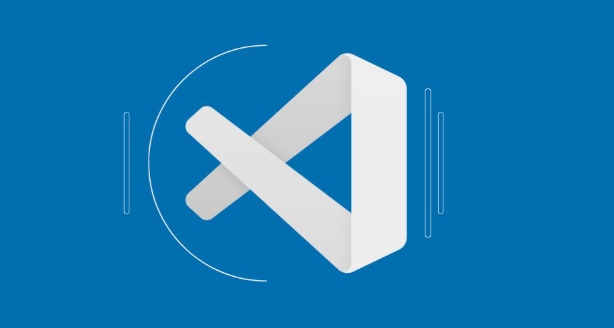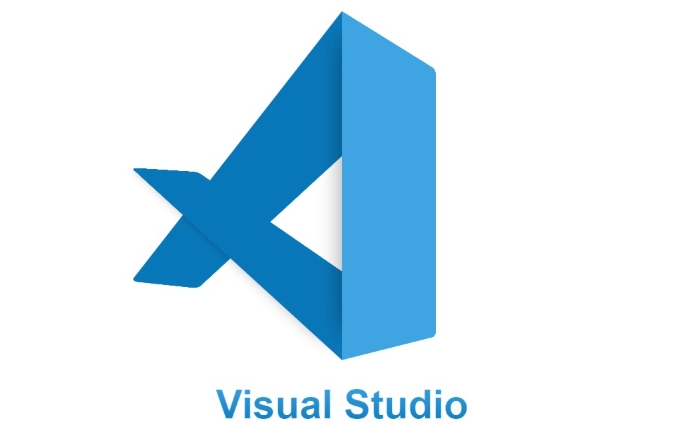When using VS Code, Prettier, IntelliSense, GitLens, and Terminal Here are key extensions to improve development efficiency. Prettier can automatically unify code formats, support multiple languages, and set automatic formatting when saving; secondly, JavaScript (ES6) code snippets and Python by Microsoft plug-in provide intelligent prompts and quick jump definition functions to improve encoding speed; then, GitLens enhances Git operations, displays row-level modification history and supports branch comparison; finally, Terminal Here allows right-click to quickly open the terminal, saving path switching time. These tools cover code specifications, intelligent assistance, version control and terminal operations, and are commonly used by developers.

If you write code with VS Code, some extensions can really help you get twice the result with half the effort. They are not just "easy to use", but they have almost become standard. The following are a type of tools that most developers will install, covering multiple aspects such as efficiency, collaboration, and debugging.

Code formatting and style unification: Prettier
It is important to maintain a consistent format when writing code, especially when teamwork. Prettier can automatically help you unify indentation, quotes, semicolons and other formats, and supports multiple languages (JS, TS, HTML, CSS, JSON, etc.). You can set automatic formatting when saving files, or trigger manually via shortcut keys.

Recommended after installation:
- Turn on
Format On Savein settings, automatically beautify the code when saving - Better use with ESLint (if there are code specification requirements)
- You can add
.prettierrcfiles to the project root directory to customize format rules
IntelliSense and Go to Definition
VS Code comes with good smart prompts, but if you are developing JavaScript, TypeScript or Python projects, it is recommended to install additional language-related plug-in packages, such as:

- JavaScript (ES6) code snippets : Provide common syntax templates to speed up development
- Python by Microsoft : Provides functions such as type inference, virtual environment recognition, etc.
In addition, "Go to Definition" (default shortcut F12) can quickly jump to the place where the function or variable is defined, especially suitable for looking at other people's code or large projects.
Version Control Assistant: GitLens
Git is the standard for modern development, and GitLens greatly enhances the Git function of VS Code. It can display who changed each line next to the code when it was changed, and can also view the commit history, compare branch differences, resolve conflicts, etc.
Recommended usage:
- Enable "Current Line Blame" to view the latest modified information of the current line
- Use "Compare with Branch" to quickly view the differences between different branches
- If you often deal with multi-person projects, this plugin will make you more clear about the ins and outs of the code
Terminal Enhancement: Terminal Here
Although VS Code comes with its own terminal, sometimes you want to open a terminal window in a specific folder. The Terminal Here plug-in can directly open the command line in the right-click menu, saving you from typing cd xxx yourself.
Tips:
- After installation, right-click the folder in Explorer → “Open Terminal Here”
- Supports Windows, macOS, and Linux
- Especially suitable for multi-project structures, saving time on switching paths
Basically that's it. Not all projects need to be installed, but if you are a front-end, Node.js, or Python developer, these suggestions are worth a try. Some functions look simple, but once used, you will feel inseparable.
The above is the detailed content of What are the must-have VS Code extensions?. For more information, please follow other related articles on the PHP Chinese website!

Hot AI Tools

Undress AI Tool
Undress images for free

Undresser.AI Undress
AI-powered app for creating realistic nude photos

AI Clothes Remover
Online AI tool for removing clothes from photos.

Clothoff.io
AI clothes remover

Video Face Swap
Swap faces in any video effortlessly with our completely free AI face swap tool!

Hot Article

Hot Tools

Notepad++7.3.1
Easy-to-use and free code editor

SublimeText3 Chinese version
Chinese version, very easy to use

Zend Studio 13.0.1
Powerful PHP integrated development environment

Dreamweaver CS6
Visual web development tools

SublimeText3 Mac version
God-level code editing software (SublimeText3)
 How to change the default terminal in vscode settings?
Jul 05, 2025 am 12:35 AM
How to change the default terminal in vscode settings?
Jul 05, 2025 am 12:35 AM
There are three ways to change the default terminal in VSCode: setting through a graphical interface, editing settings.json file, and temporary switching. First, open the settings interface and search for "terminalintegratedshell" and select the terminal path of the corresponding system; secondly, advanced users can edit settings.json to add "terminal.integrated.shell.windows" or "terminal.integrated.shell.osx" fields and escape the path correctly; finally, you can enter "Terminal:SelectD through the command panel
 Fixing 'Timed out waiting for the debugger to attach' in VSCode
Jul 08, 2025 am 01:26 AM
Fixing 'Timed out waiting for the debugger to attach' in VSCode
Jul 08, 2025 am 01:26 AM
When the "Timedoutwaitingforthedebuggertoattach" issue occurs, it is usually because the connection is not established correctly in the debugging process. 1. Check whether the launch.json configuration is correct, ensure that the request type is launch or attach and there is no spelling error; 2. Confirm whether the debugger is waiting for the debugger to connect, and add debugpy.wait_for_attach() and other mechanisms; 3. Check whether the port is occupied or firewall restricted, and replace the port or close the occupied process if necessary; 4. Confirm that the port mapping and access permissions are configured correctly in a remote or container environment; 5. Update VSCode, plug-in and debug library versions to solve potential
 How to set environment variables for the terminal in VS Code settings on Linux?
Jul 06, 2025 am 12:23 AM
How to set environment variables for the terminal in VS Code settings on Linux?
Jul 06, 2025 am 12:23 AM
There are two ways to set environment variables for VSCode terminals on Linux: one is to use the terminal.integrated.env.linux configuration item to define variables that are only used by VSCode; the other is to modify the shell configuration file to take effect globally. 1. In VSCode, add variables such as "MY_VAR":"my_value" by setting the terminal.integrated.env.linux field. This method only affects the VSCode terminal; 2. Modify shell configuration files such as ~/.bashrc or ~/.zshrc and add exportMY
 What are VS Code workspaces, and how are they used?
Jul 10, 2025 pm 12:33 PM
What are VS Code workspaces, and how are they used?
Jul 10, 2025 pm 12:33 PM
VSCode workspace is a .code-workspace file that saves project-specific configurations. 1. It supports multi-root directory, debug configuration, shortcut key settings and extension recommendations, and is suitable for managing different needs of multiple projects. 2. The main scenarios include multi-project collaboration, customized development environment and team sharing configuration. 3. The creation method is to save the configuration through the menu File>SaveWorkspaceAs.... 4. Notes include distinguishing between .code-workspace and .vscode/settings.json, using relative paths, and avoiding storing sensitive information.
 Where is the vscode settings.json file located?
Jul 14, 2025 am 01:21 AM
Where is the vscode settings.json file located?
Jul 14, 2025 am 01:21 AM
To access the settings.json file of VSCode, you can directly open it through the command panel (Ctrl Shift P or Cmd Shift P). The default storage location of the file varies according to the operating system. Windows is in %APPDATA%\Code\User\settings.json, macOS is in $HOME/Library/ApplicationSupport/Code/User/settings.json, Linux is in $HOME/.config/Code/User/
 How to set environment variables for debugging in vscode settings?
Jul 10, 2025 pm 01:14 PM
How to set environment variables for debugging in vscode settings?
Jul 10, 2025 pm 01:14 PM
To set debug environment variables in VSCode, you need to use the "environment" array configuration in the launch.json file. The specific steps are as follows: 1. Add "environment" array to the debugging configuration of launch.json, and define variables in key-value pairs, such as API_ENDPOINT and DEBUG_MODE; 2. You can load variables through .env files to improve management efficiency, and use envFile to specify file paths in launch.json; 3. If you need to overwrite the system or terminal variables, you can directly redefine them in launch.json; 4. Note that
 How can I improve VS Code performance on Linux by changing file watcher settings?
Jul 13, 2025 am 12:38 AM
How can I improve VS Code performance on Linux by changing file watcher settings?
Jul 13, 2025 am 12:38 AM
ToimproveVSCodeperformanceonLinux,adjustinotifylimitsandconfigurefilewatcherexclusions.First,increasesystem-levelinotifylimitsbyeditingsysctl.confandaddingfs.inotify.max_user_watches=524288,fs.inotify.max_queued_events=65536,andfs.inotify.max_user_in
 How to disable extensions for a specific workspace in vscode settings?
Jul 05, 2025 am 01:22 AM
How to disable extensions for a specific workspace in vscode settings?
Jul 05, 2025 am 01:22 AM
In VSCode, you can disable specific extensions by configuring .vscode/extensions.json and workspace settings. The specific steps are as follows: 1. Create or edit the .vscode/extensions.json file and add "ignoreRecommendations":true to ignore global recommendations; 2. Use the "recommendations" field in this file to specify only enabled extensions; 3. Open the workspace settings.json file and add configuration items such as "eslint.enable":false to disable support






